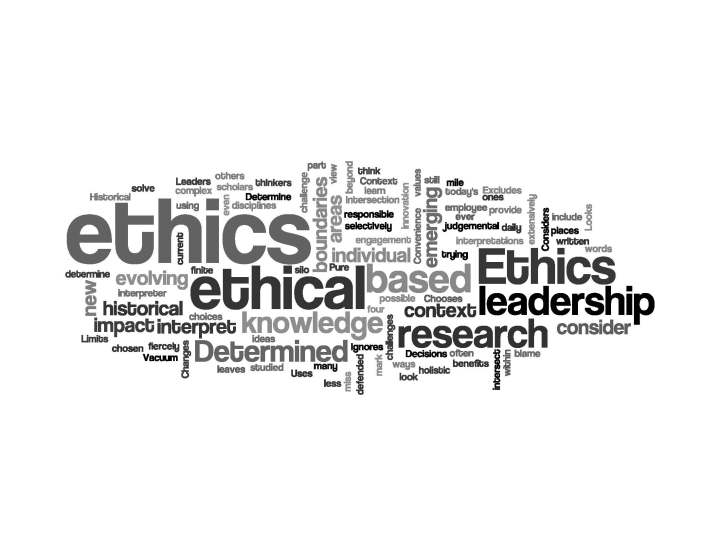
How Do We Determine Our Ethics as Leaders?
Why is it such a challenge to determine how we interpret “ethical leadership?” Because there are many different ways of determining what we consider to be ethical. Even while trying to be responsible we can still miss the mark by a mile.
Consider some of the possible ways that a leader might interpret ethics.
Ethics in a Vacuum
- Looks at “ethics” in a silo, investigating deeply rather than broadly
- Excludes areas that others consider to be part of ethical leadership
- Ignores how emerging knowledge in other areas of practice should impact ethical leadership
Ethics of Convenience
- Determines what is ethical based on individual values and selectively chosen research
- Defines “ethics” in the context that provides the most benefits for the interpreter
- Often fiercely defends own decisions as “ethical” using judgemental words and blame
Ethics in a Historical Context
- Defines ethics based on the knowledge of ethics scholars and historical thinkers
- Uses historical ideas to solve today’s complex challenges
- Ignores the current evolving leadership context and new research
- Limits the boundaries of ethics to those that have been extensively written about and studied
Ethics at the Intersection
- Determines what is ethical based on a holistic view of ethics
- Changes definition of “ethical” based on new research. .. not finite… ever evolving
- Considers research beyond the boundaries of “formal ethics” to include the impact of choices on employee engagement, innovation and more
- Takes an integrative perspective, looking at what we can learn from the places where many disciplines intersect (for example: philosophy, psychology, sociology, ecology and leadership)
While we cannot ignore what we have learned from the past, we also cannot ignore what we are learning in the present. It is equally important to take a broad and integrative approach, not limiting the scope of our view to incorporate only that which is personally familiar or personally beneficial. A combination of approaches is probably the most responsible, studying the historical understanding of ethics but not being restricted by its boundaries, and studying the emerging knowledge without losing sight of its historical context.
 For more, see Linda’s book 7 Lenses and the 21 Question Assessment: How Current is My Message About Ethics?
For more, see Linda’s book 7 Lenses and the 21 Question Assessment: How Current is My Message About Ethics?
 2014 Axiom Business Book Award Winner
About 7 Lenses
Info@LeadinginContext.com @leadingincontxt @7Lenses
2014 Axiom Business Book Award Winner
About 7 Lenses
Info@LeadinginContext.com @leadingincontxt @7Lenses
© 2011 Leading in Context LLC
Reblogged this on Gr8fullsoul.
LikeLike